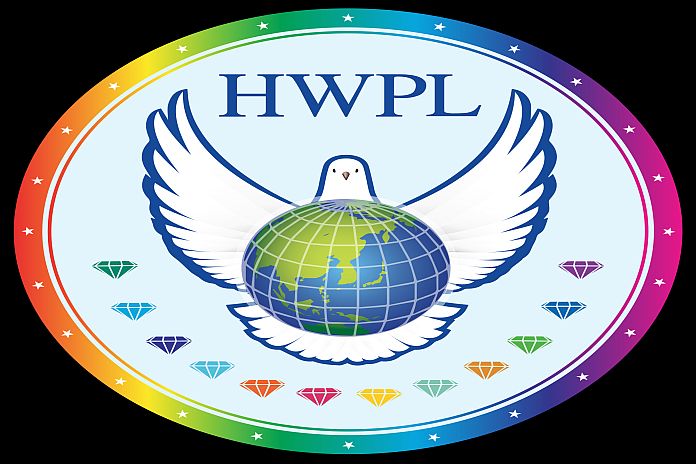WASHINGTON, USA – The war between Ukraine and Russia has killed over 3,000 people. Its been nearly four months since the conflict broke out, and there is no end in sight. Sadly this isn’t an isolated case. The world has put a lot of effort into resolving conflict worldwide and establishing peace. However, after the end of the Cold War, ethnic and religious identities emerged as a primary source of conflict. The emergence of a new conflict structure requires a new approach to problem-solving.
In this new reality, the achievements of the international peace organization Heavenly Culture, World Peace, Restoration of Light (HWPL), presents a ‘New model of peace’ to the global community. Chairman Lee Man-Hee of HWPL is a Korean War veteran who experienced the horrors of the war and was honourably discharged from military service because of a gunshot wound. He is now a peace activist who works to achieve the common goal of cessation of war and world peace. His representative achievement as HWPL’s leader was his contribution to peace in Mindanao, Philippines.
Mindanao was the site of the largest armed conflicts in Southeast Asia. The Moro Islamic Liberation Front (MILF), based in Mindanao, was the largest armed force in Southeast Asia as well as the Philippines. In the 2010s, the Philippine government declared an all-out war with the MILF, which resulted in over 120,000 casualties. The Mindanao conflict is a good example of an ethnic and religious-based conflict that emerged in the 21st century. After much bloodshed, the Philippine government and the MILF signed a Framework Agreement on the Bangsamoro in October 2012 due to the intervention of the international community, recognizing Muslim autonomy in Mindanao.
But even after the agreement, the deep-rooted conflict between Islam and Catholicism did not end. Then, in September 2013, Antonio Ledesma, former Catholic Archbishop of the Metropolitan Archdiocese of Cagayan de Oro, requested chairman Lee of HWPL to mediate the settlement of the Mindanao conflict.
Chairman Lee, who has toured the world 31 times for peace until just before COVID-19, responded to visit Mindanao, which was still tense due to armed conflicts. On January 24, 2014, chairman Lee visited Mindanao and held a Peace Walk, inviting more than 1,000 people including students from Mindanao State University, and members of Youth Group, to the City of General Santos, Philippines for the first time.
After the Peace Walk, chairman Lee called to stop any acts that might encourage conflict in the name of religion and stressed that:
“The will of the creator is not war, but peace.” Afterwards, he asked the attendees “Do you want peace or war? If you want peace, please raise your hands.” Seeing everyone with raised hands, chairman Lee asked Fernando Capalla, former Davao Archbishop, and Esmael Mangudadatu, Governor of Maguindanao to sign a peace agreement.
The government forces and MILF finally agreed on the final annex of the Preliminary Peace Agreement on January 25, 2014. The agreement is to recognize Muslim autonomy and gradually disarm the MILF in the Bangsamoro region in southern Mindanao, and it is considered the biggest progress in the 18-year negotiation process between the two sides. In May of that year, the Philippines parliament began to enter the so-called Bangsamoro Basic Law into the legislative process, and the civil war of Mindanao was over when president Rodrigo Duterte finally signed this Law in August 2018.
The Civil Peace Agreement arbitrated by HWPL was Mindanao’s declaration of permanent peace. Since then, HWPL and all related parties, including local politics, religion, and civil society, have continued to cooperate.
Efforts initiated by civil society have been developed to cooperate in the education sector with central government ministries at the national level. Starting with signing a Memorandum of Understanding (MOUs) with 70 educational institutions in February 2016.
HWPL implemented peace education curriculums that have since been presented by the United Nations and UNESCO. HWPL signed an MOU with The Commission on Higher Education in 2018. Through this cooperation, 2551 teachers, from 557 educational institutions in the Philippines are trained to teach peace education to up to 23,000 students (200 teachers and 5,000 students from Mindanao).
In addition, HWPL continues to campaign to raise awareness of peace in which citizens participate. The organization is also building a peace monument in cooperation with civic groups. On May 25, 2015, “the 2nd Anniversary of Peace Walk in Commemoration of the Declaration of World Peace” was held in Buluan, Maguindanao Province, hosted by HWPL. At the event, not only local Catholic and Islamic leaders but also key figures from the MILF, politicians, soldiers, police, and about 3,000 citizens gathered to create peace and harmony.
In addition, on January 24, 2016, HWPL Peace Monument was erected in Camp Darapanan, Sultan Kudarat in Mindanao, to commemorate the second anniversary of the Civil Peace Agreement. During the January 24th celebrations, MILF Chairman Hon. Ahod Ebrahim declared January 24 as ‘HWPL Day.’ This announcement was to recognize HWPL’s contributions to achieving peace in Mindanao. On this day, MILF chairman Ebrahim presented chairman Lee with a sickle as a sign that he would make such one by melting weapons.
“The camps will be turned into productive communities. Our combatants will focus on earning their own livelihood, living in the camp peacefully. We establish the monument of peace in our other camps when this is implemented,” he expressed his desire for an end to the war in Mindanao.
A few years later, MILF chairman Ebrahim’s wish became a reality. The HWPL Peace Monument, erected on July 19, 2021, in the Barangay Bagua Mother, Cotabato City, Mindanao, is proof of this. This peace monument is special because of weapons owned by Former MILF combatants. The guns were donated, melted, and used in the monument.
Regarding future activities in Mindanao, John Rommel Garces, chief branch manager of HWPL’s Philippines, said:
“The core value of the Mindanao Peace Agreement is an approach of ‘citizen-centred awareness improvement and action’ for peace. According to this approach, HWPL will carry out peace projects based on civil society such as education, religion, youth, and women. In 2022, we will focus on the establishment of additional peace monuments in Mindanao as well as various locations in the Philippines, the realization of autonomy in the Bangsamoro Muslim Mindanao autonomous region and the promotion of cooperative projects for peace-building, establishment of the HWPL Interfaith Religious Peace Office in Davao City and other places in Mindanao, and to host active regular meetings,” he added.
Heavenly Culture, World Peace, Restoration of Light (HWPL) is an international peace organization established for the cessation of war in the global village and for world peace. HWPL is a non-governmental organization registered with the UN Department of Global Communications (DGC) and the UN Economic and Social Council (ECOSOC) as a special consultative status organization and registered in Seoul, Korea.








